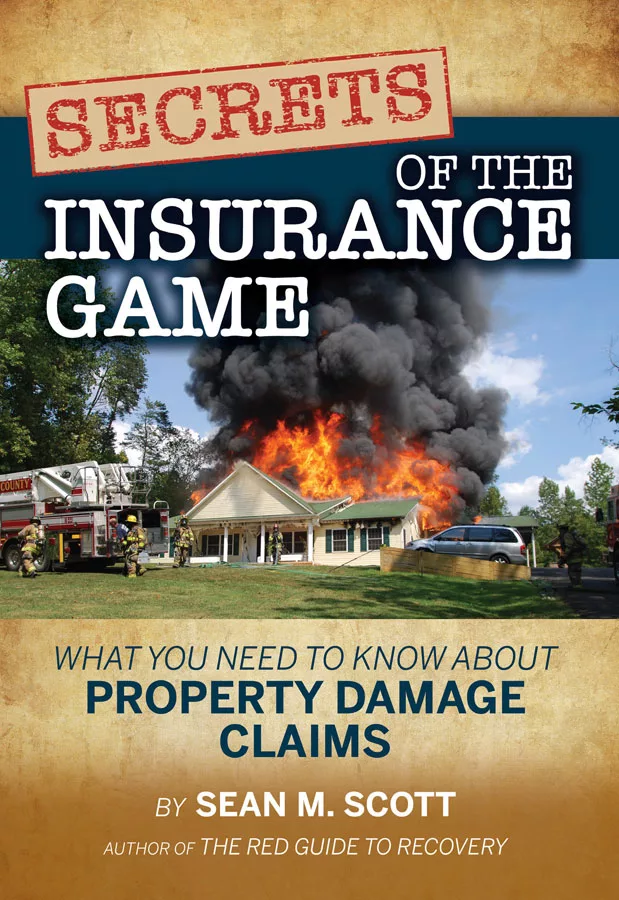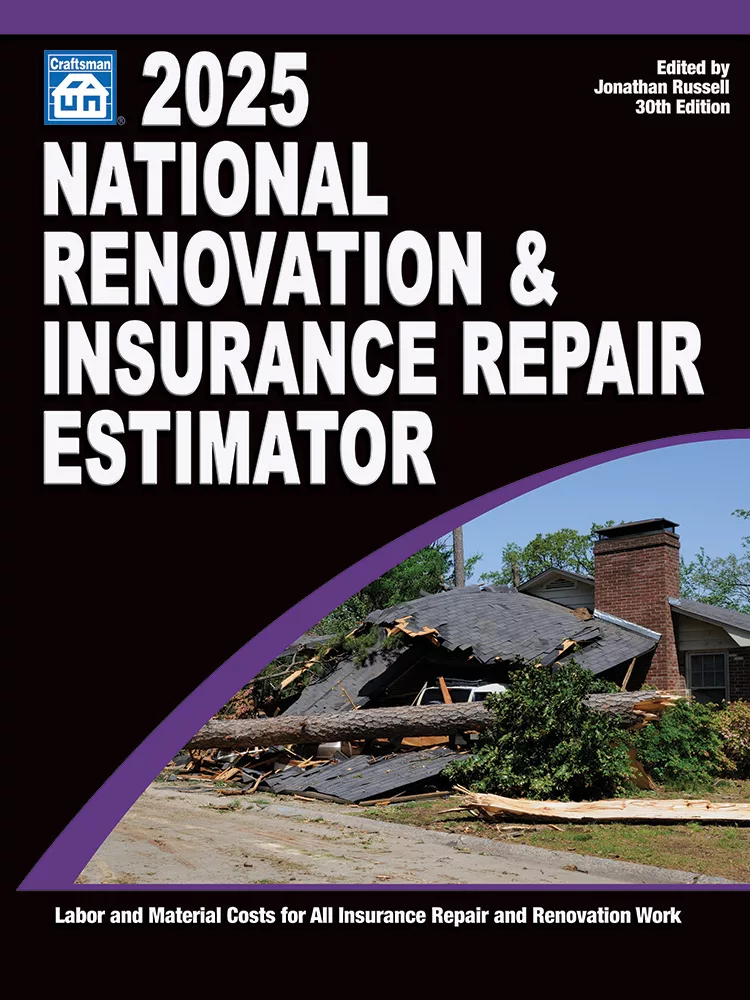Your Risks and Insurance: A Year in Review

Photo credit: ablokhin/iStock/Getty Images Plus via Getty Images
It’s been a wild ride in the restoration and insurance business for the past year. Here I will recap the past 12 months. Next month in R&R, I will look through my crystal ball to predict what the risk and insurance picture will look like for restorers over the next 12 months.
The Actual Versus Perceived Risks of COVID-19
COVID-19, of course, was the big risk and insurance story of the last 15 months. Restorers had opportunities to perform cleaning and disinfecting services as soon as they became essential workers, which happened quickly in March of 2020. The firms that embraced that new market early and were incumbents on building cleaning services contracts did well through the pandemic. Other firms suffered steep declines in revenue as a result of the pandemic.
Due to COVID-19 I ended up working harder than I have for many years to develop risk management solutions for the new cause of loss in our customer base of restoration firms. New risk management tools had to be created to facilitate the cleaning and disinfecting work performed by our clients. On March 10, 2020, there was no easily understood, legally defensible, cleaning and disinfecting protocol for any virus, let alone a new virus that was causing thousands of deaths and the travel ban. There was also no purpose-designed liability insurance available for the firms performing virus disinfecting work. For over 100 years there had been no need for such an insurance product.
After receiving a call from a restoration industry leader that needed a virus disinfection protocol developed fast for their crews that were already in the field performing disinfection services, I worked with a host of biohazard experts in RIA and the IICRC to produce a legally defensible disinfecting protocol. The first protocol was completed within five days of receiving the call to action. That document is now in its fifth edition and includes input from the American Industrial Hygiene Association. I highly recommend that anybody performing biohazard cleaning and disinfecting services become familiar with this purpose-designed, legally defensible virus cleaning and disinfecting protocol. It is on the American Risk Management Resources (ARMR) website at https://armr.net/superstore.
Two days after that protocol was published by RIA and the IICRC, the first Contractors Pollution Liability (CPL) insurance policy with an affirmative coverage grant for performing COVID-19 disinfecting services was available. But that needed insurance coverage was only available to our current customers at the time. ARMR is an insurance brokerage firm that works with local insurance agents in every state. We were getting many desperate calls a day from contractors and insurance agents for that coverage. It took weeks before we could procure CPL insurance with an affirmative coverage grant for virus cleaning and disinfecting work on new clients. We have that coverage readily available today.
With 20/20 hindsight, the early risk assessments of the COVID-19 virus were way overblown. The virus did not live on grocery bags for two weeks at survival rates that could cause harm to humans and the coronavirus did not transfer from a surface to your lungs in enough dosage to cause infection – two things that a lot of people were concerned about in March of 2020.
In 2020, insurance companies were bombarded with claims related to COVID-19. In June of 2020, one prediction was that COVID-19 would cost insurance companies as much as $547 billion or, in the same report, as little as $30 billion. To put things into perspective Hurricane Katrina cost insurers about $40 billion. The actual cost of COVID-19 on insurers across the globe, assuming they continue to win on the business interruption losses in the U.S., is closer to $100 billion, which includes claims under life insurance policies. The global insurance business sails through a $100 billion dollar loss event simply by raising rates a little.
Twenty-fold variations in projected costs drive insurance company executives nuts. How much do they need to charge in premiums to cover the new loss costs driven by COVID-19 was the question. The answer was they did not know the answer in the spring of 2020, so they added new exclusions for Communicable Disease and Virus as a cause of loss to virtually all the property and liability policies they sell. Once an exclusion like that makes its way into insurance policies it is unlikely to ever be removed. As an example of that phenomenon, just look at what happened to coverage for mold and bacteria as a cause of loss in 2004 and 2005. After the news media sensationalized “toxic” mold, all property and liability insurance policies now have exclusions or sublimits for mold and bacteria related damages. I know there is no such thing as toxic mold by the way.
More than 99% of the claims under business policies versus life insurance policies were for the costs of business interruption under property insurance policies. Although the top insurance experts came out of the shoot in the spring of 2020 with articles in trade journals documenting exactly why a business property insurance policy does not cover losses arising from a government-ordered travel ban, no one knew what the outcome was going to be on those claims if policy holders went to court to find coverage.
Insurance companies always respond very quickly to new biohazard loss exposures by excluding them and dumping their customers that have an unusual exposure to the new risk. Although insurance companies at global scale are capable of excluding a new risk on new and renewal insurance policies in a half a day or less, it takes most insurance agents years to respond to the new exclusions in their customer base. For example, most (60%) insurance agents continue to sell General Liability insurance policies to restorers working on mold and category 3 water damage that an exclusion for any loss arising from a job site where the contractor is assessing or cleaning up mold or bacteria. That language applying an exclusion to a scope of work at a job site is buried in the Fungi or Bacteria exclusion endorsement to the general liability insurance policy, is found on every mono-line General Liability policy sold to a contractor in America. Excluding “Any loss” would include burning the house down on a category 3 water job.
That exclusion in the General Liability insurance policy applies to the entire job site based on the purpose of the scope of work, not just to a claim caused by actual exposure to mold or bacteria (that is excluded separately). CPL policies only work to insure claims arising from the damages caused by exposure to defined “pollutants,” which can include fungi, mold or bacteria. Therefore, the fungi, mold and bacteria jobsite exclusion goes way beyond what any CPL policy insures. This results in an unresolvable liability insurance coverage gap every time a separate GL and CPL policy is sold to a restoration firm that works on a job site containing a speck of any type of mold or bacteria that needs to be assessed cleaned up.
Only a purpose-designed combined GL and CPL policy works to fix the jobsite exclusion for losses arising from fungi (mold) or bacteria (category 3 water) job sites in General Liability insurance policies. Those cost-effective, purpose-built policies have been available since 2005 from many different insurance companies. But 16 years later, 60% of insurance agents do not sell them for different reasons too long to list here.
With that track record for insurance agents dealing with mold and bacteria exclusions, it will be interesting to see how long it takes insurance agents to respond to Communicable Disease and Virus exclusions in their customer base. The good news is, unlike the situation with fungi and bacteria, the coverage gaps for a communicable disease and virus can be fixed in a contractor’s insurance program with a modified CPL policy. That CPL coverage can also protect building owners and managers as Additional Insureds on the contractor’s insurance for no additional premium. Making the CPL insurance important to the contractor’s customers as well.
As of this writing, building owners cannot purchase coverage for communicable disease (COVID-19 is a communicable disease) or virus as a cause of loss. Wise purveyors of building sanitation and disinfecting services who learn how to play the CPL insurance coverage card to benefit their clients, should have a competitive advantage over uninsured or uninsurable cleaning firms on building disinfection work.
COVID-19 Insurance Claims Development in Retrospect
There were a lot of insurance claims associated with COVID-19 in 2020, but new claims are dwindling fast. The insurance trade press is filled with articles about insurance coverage litigation over COVID-19 claims. Almost all are focused on property owner’s business interruption claims. Insurance companies are winning on those litigated insurance coverage cases at about a five-to-one ratio. Basically, the insurance companies are arguing there was no direct damage to insured property that was caused by the coronavirus. Many lawsuits are being abandoned over the apparent impossibility of winning in court.
Liability claims from COVID-19 are rare. It is almost impossible for a plaintiff to prove that a defendant was the proximate cause of the plaintiff’s illness. Knowing that, trial lawyers are staying away from making liability claims against commercial property owners or the cleaning and disinfecting services vendors. If restorers avoid illegally applying ineffective chemical potions to kill viruses and avoid making warranties of long-term sterilization of surfaces, building cleaning and disinfecting is low-risk work from a virus exposure basis. Just be sure you have an affirmative coverage grant in your liability insurance for the biohazard work you do, and you will have a well-managed risk.
Workers Compensation claims from COVID-19 are a fraction of what was anticipated in the spring of 2020.
So… the sky is not falling over COVID-19 liability claims in the cleaning disinfecting or restoration business. Whew! Nobody knew that last year at this time.
In the next edition of R&R, I will cover your insurance picture for 2021 and forecast the next 12 months.
Looking for a reprint of this article?
From high-res PDFs to custom plaques, order your copy today!









